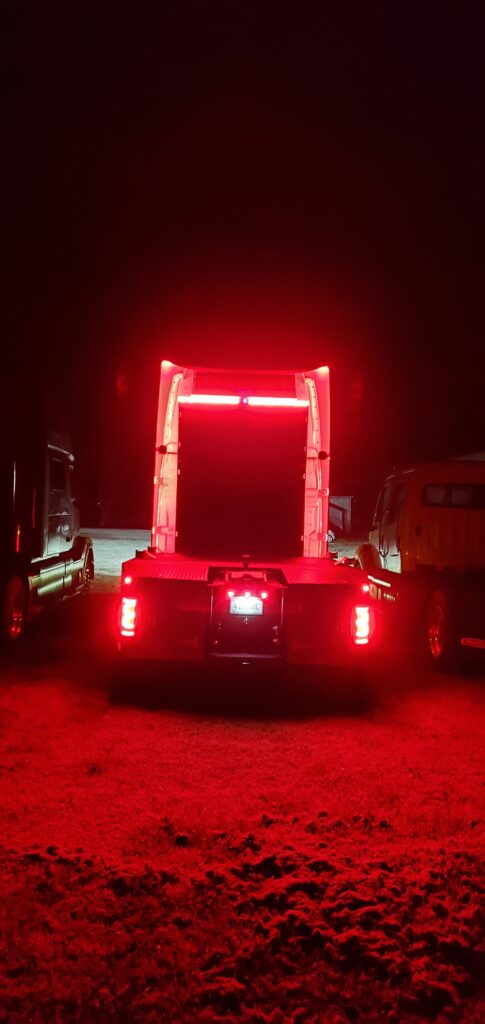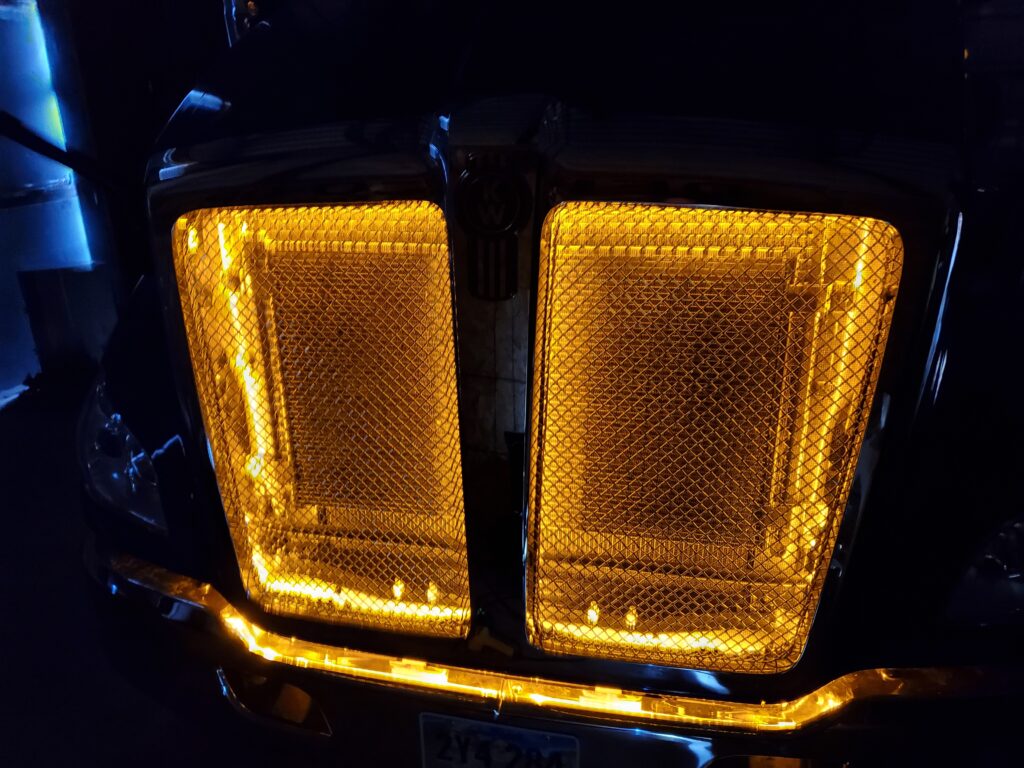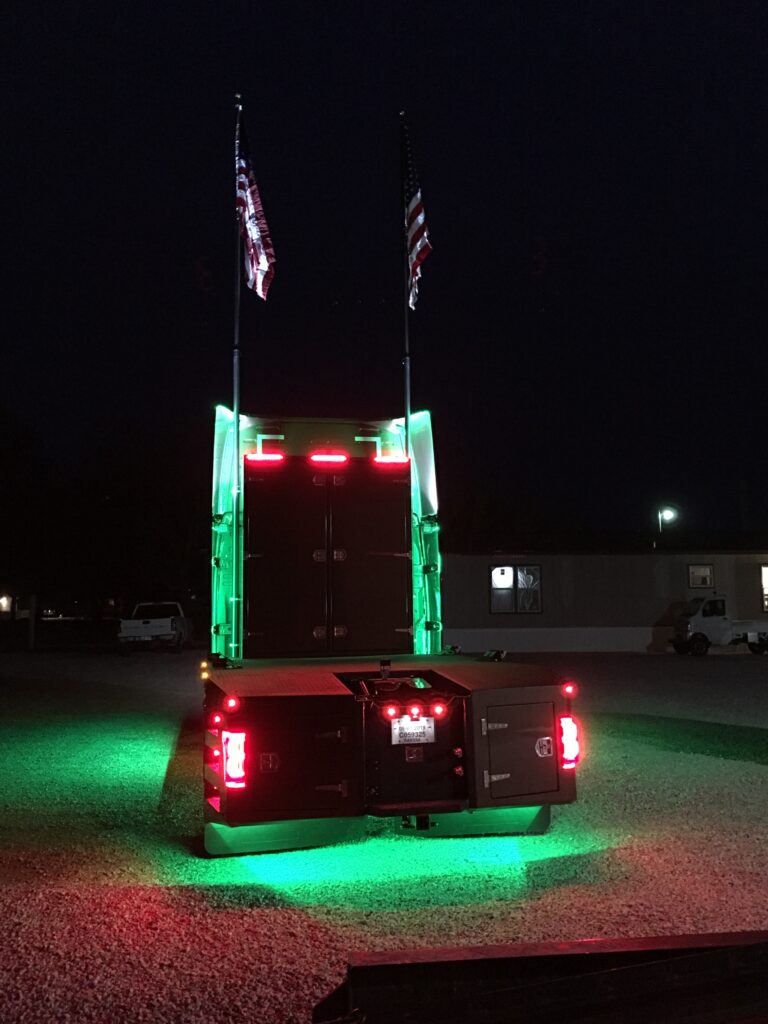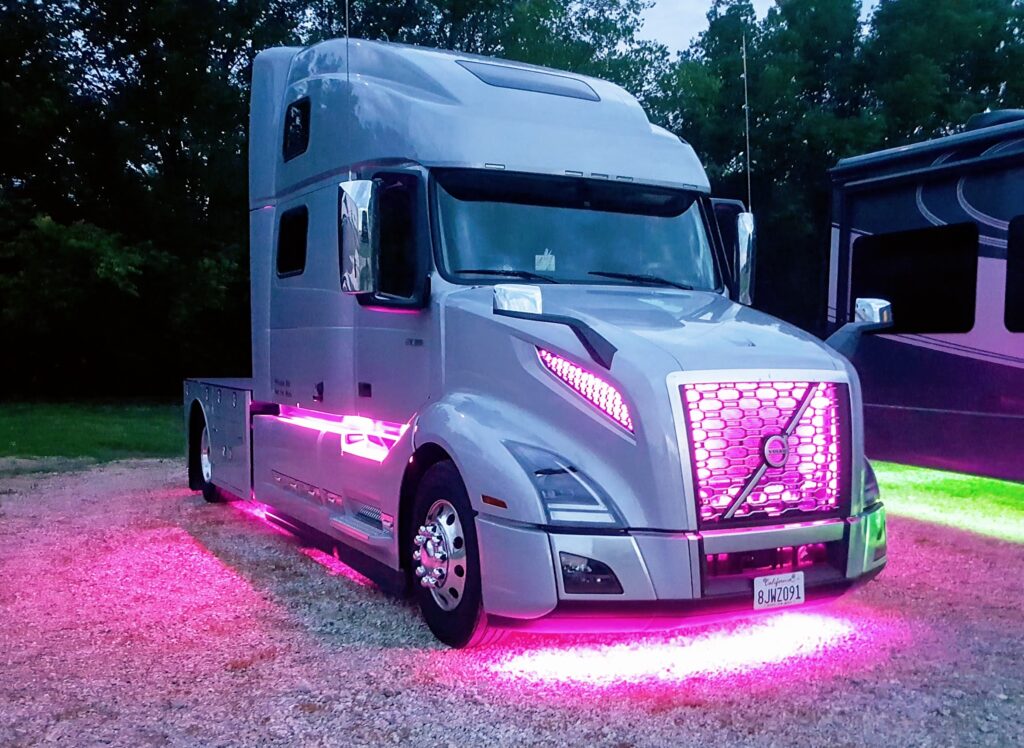We specialize in electrical, and we do it right. We use proper wire sizes, marine grade heat shrink terminals, and higher grade components than many other installers. We isolate all our electrical from the truck systems, so there is less risk of interaction between the truck and add-on components.
Our truck electrical center isolates accessories from the truck systems, and performs the required light conversion for your trailer lights. It allows you to easily add additional accessories without tapping into your truck electrical system.
Do not confuse our electrical implementations with typical cheap RV and truck center implementations. We use best-in-class components that we have proven in service, NEC and RVIA compliant wiring, and isolate things properly from your truck to minimize potential issues in the future. We properly size wiring and properly protect circuits.
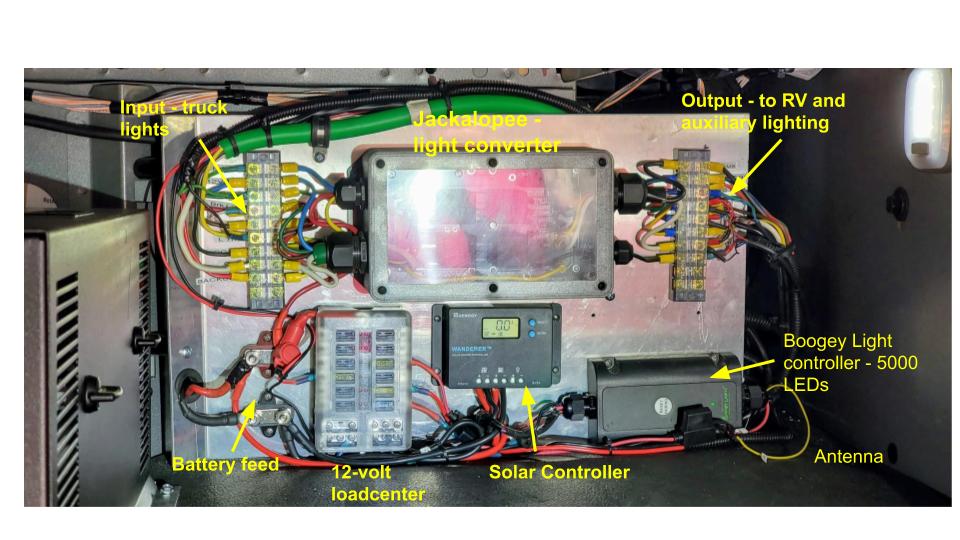
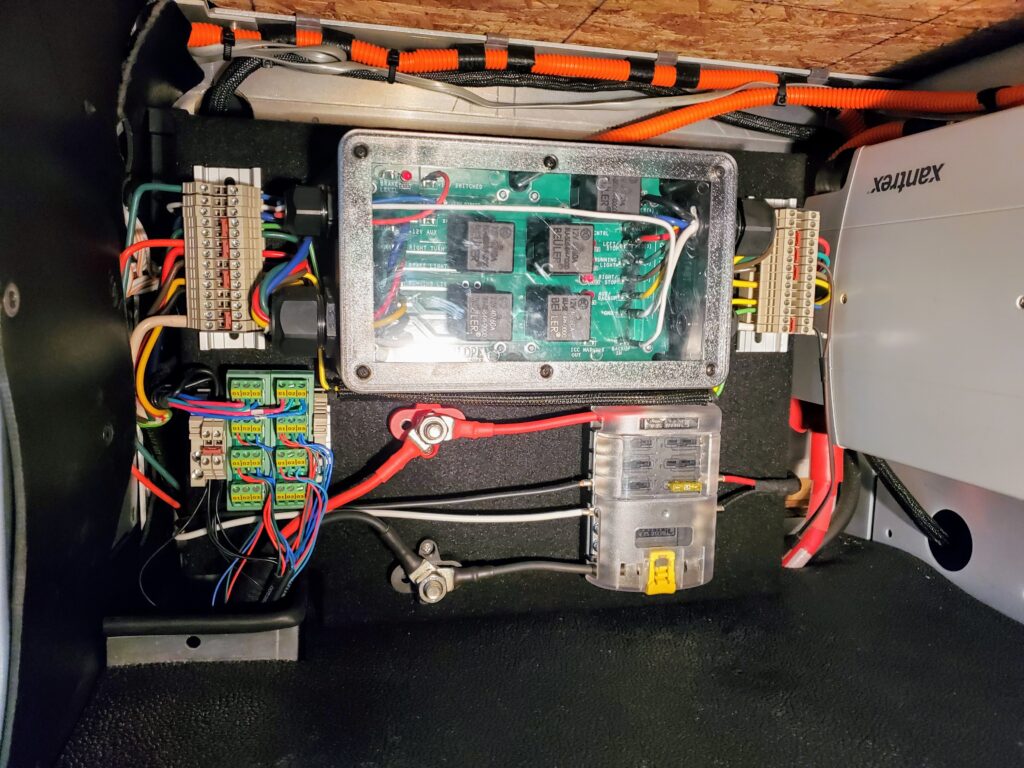
Truck Inverters and Shore Power
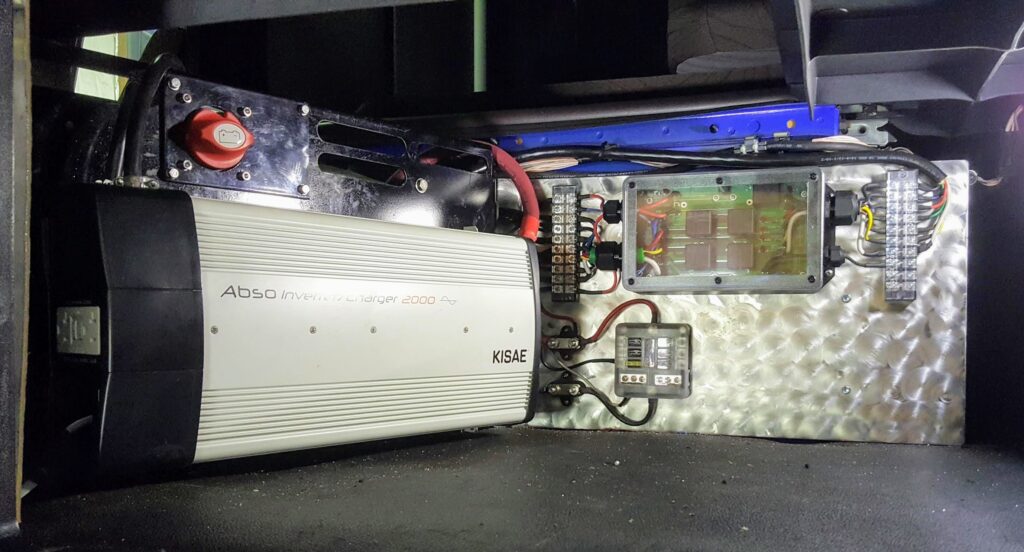
Many trucks already have a shore power connection with 120 volt outlets in the cab. Where they do not, we can add the external shore power receptical, and interior recepticals for appliance use. We would typically add a “cab power” component in a Volvo, or another type of loadcenter in non-Volvo’s, for power distribution inside the cab.
We can also add or upgrade an inverter so that you will have 120 volt power when shore power is not available. We use pure sine wave inverters exclusively – typically an integrated 2000 watt inverter/charger/transfer switch in one device, as shown above. This allows seamless transition from shore power to inverted power, and also charges your chassis battery bank when shore power is available. The typical inverter we use has a 55 amp 12 volt charge capability, with a three-stage charger.
The inverter is run from the chassis battery bank, but we can provide additional “house” battery banks if desired. Including Lithium battery banks.
Note that the availability of 120 volt power in the cab is one of the elements that allows for “motorhome” titling of the truck, where that is desired.
RV Electrical and Solar
We provide class-leading electrical upgrades for your RV – including split phase (240 volt) capabilities, large lithium battery banks capable of running your air conditioning, and complete solar packages. Anything that can be done electrically on your RV is likely something that we do.
We only use Victron components for new installs, although we can work with other products to expand your existing system. We use Rich Solar for solar panels, and typically SOK batteries. We consider these manufacturers to be among the top providers in the industry.
It is important when doing solar and electrical upgrades that you have a good understanding of your electrical needs. Balancing your needs with the cost of the system is very important. Like anything else in the RV world it is all about the tradeoffs. We can help you identify what works well and that meets most or all of your electrical needs. All but the largest of our systems are expandable, and implementing a system in phases is certainly something we encourage.
While we do implement smaller systems, our typical system is a large battery bank – usually 25kWh, which is about the equivalent of 20 Battleborn 100Ah batteries. This is typically paired with two inverters for 10kVA of power. That is near what is available via a 50 amp shore power pedestal (which is 12,000 watts). That solution can easily run mini-split air conditioners.
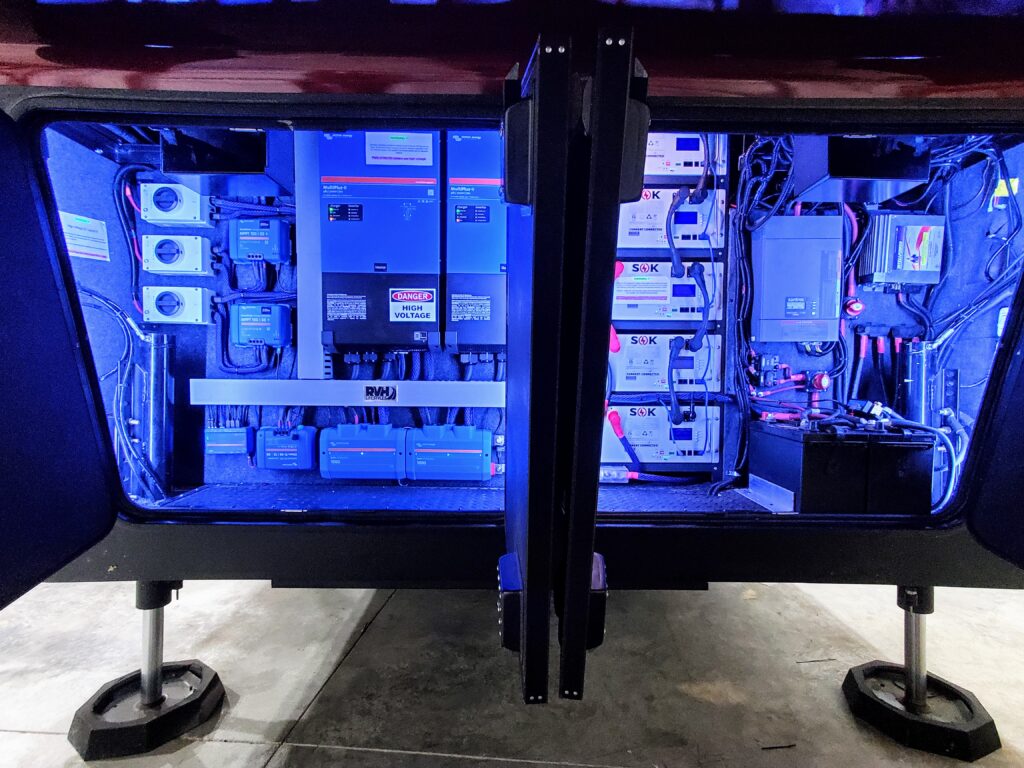
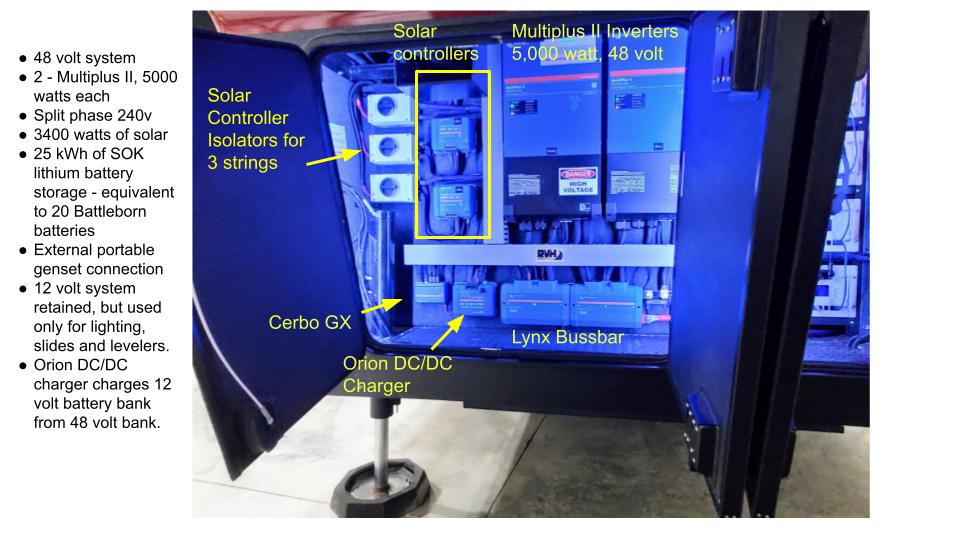
The implementation above used the Multiplus II inverters from Victron. More typically in this system we would use the Victron Quattro to make genset management easier. The system above did not have a genset.
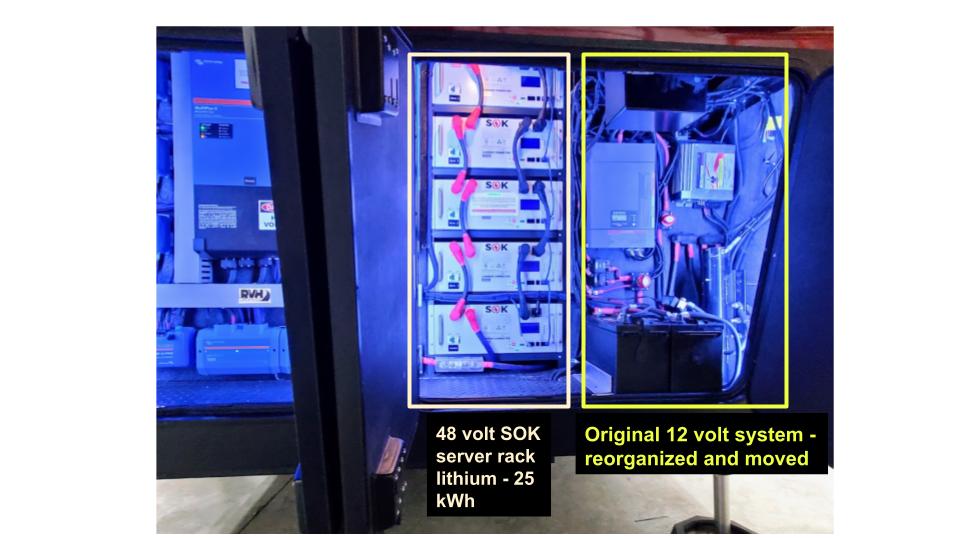
Truck House Battery Bank
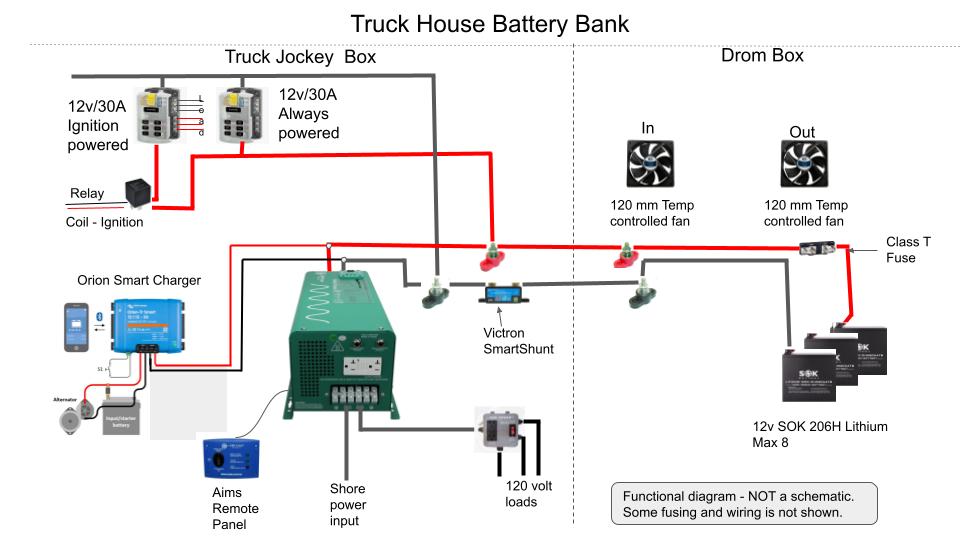
If your mission profile requires a house battery bank we can set you up with that. We typically install up to eight lithium batteries in a specialized drom box. These batteries are heated and cooled for proper environmental conditions and can supply up to 1648 amp hours of 12 volt power. Or more in specialized cases.
We can pair this with any inverter desired, but usually we use the Aims 2500 watt low frequency pure sine wave inverter charger, with a remote control positioned in the truck cab. This inverter handles surges very well, and can output up to 7500 watts for 20 seconds. It’s 85 amp charge section can be set up for a Lithium battery profile, and it has an inbuilt transfer switch for easy integration of shore power. Do not confuse this inverter/charger with the cheap “Amazon” or truck stop inverters. This is a quality inverter that will handle most loads you would throw at it.
As shown in the drawing, we place the batteries in the specialized drom box, and the inverter and other components in the truck jockey box (storage compartment).
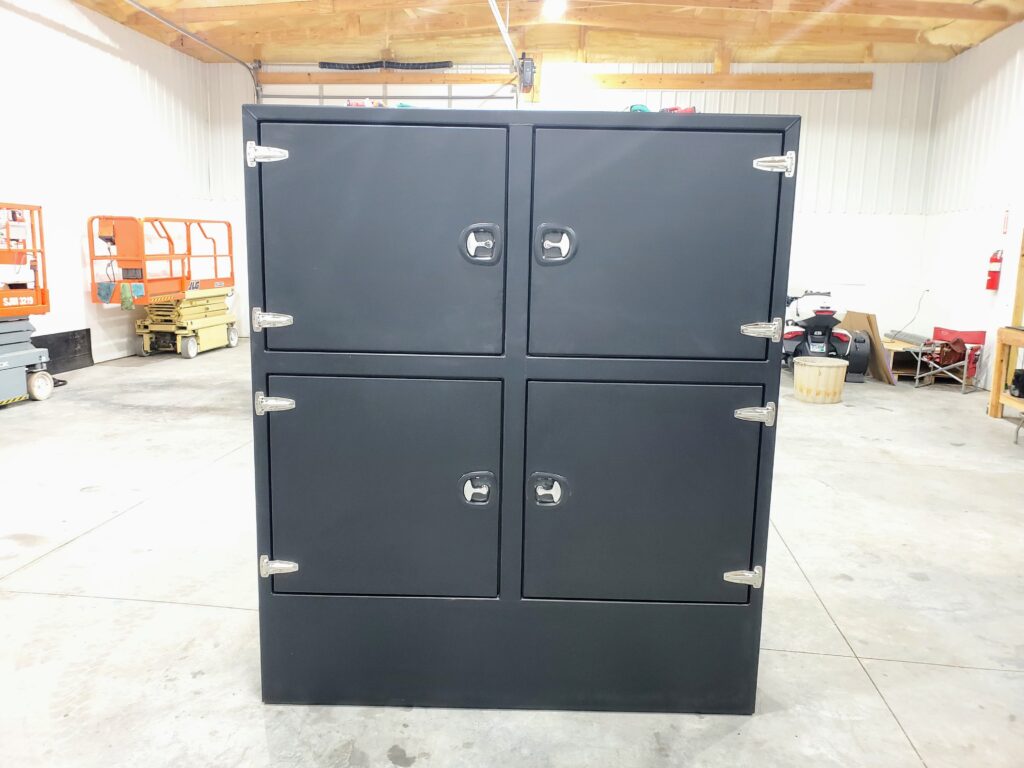
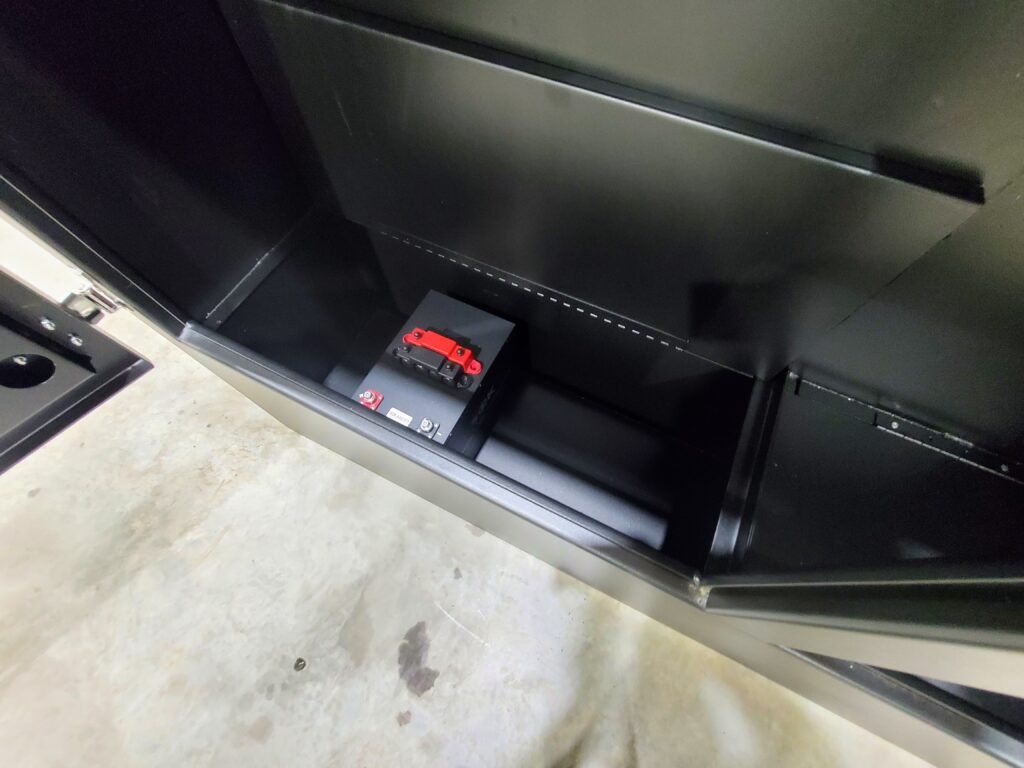
Having a separate battery bank means you have to provide means to charge it. Charging of the house battery bank is from two sources.
The alternator is used to provide charge to the battery bank. But it needs special equipment involved to make sure that the alternator does not overheat, and also that the charging profile is suitable for the lithium batteries typically used in the house battery bank. The Victron Orion Smart DC/DC Charger accomplishes this.
The second source of battery charging is from shore power, using the charge section of the inverter. The inverter/charger needs to be properly configured for a lithium battery charge profile, so inverter selection is important. Not all inverters are capable of charging lithium chemistry batteries.
When a house battery bank is used we move all house loads to the house battery bank. This includes the outlets in the cab, the refrigerator (if present) the Webasto power and any other 12-volt or 120-volt power sources that are suitable. We leave any winches on the chassis battery bank, since we want to ensure their operation even if the house battery bank was depleted.
Solar Panels
We can add solar panels for trickle charging needs and add trickle chargers, battery bank monitors, and separate house battery banks that support your electrical needs without taxing your truck batteries. Just about anything you can think up, we can design and install for you.
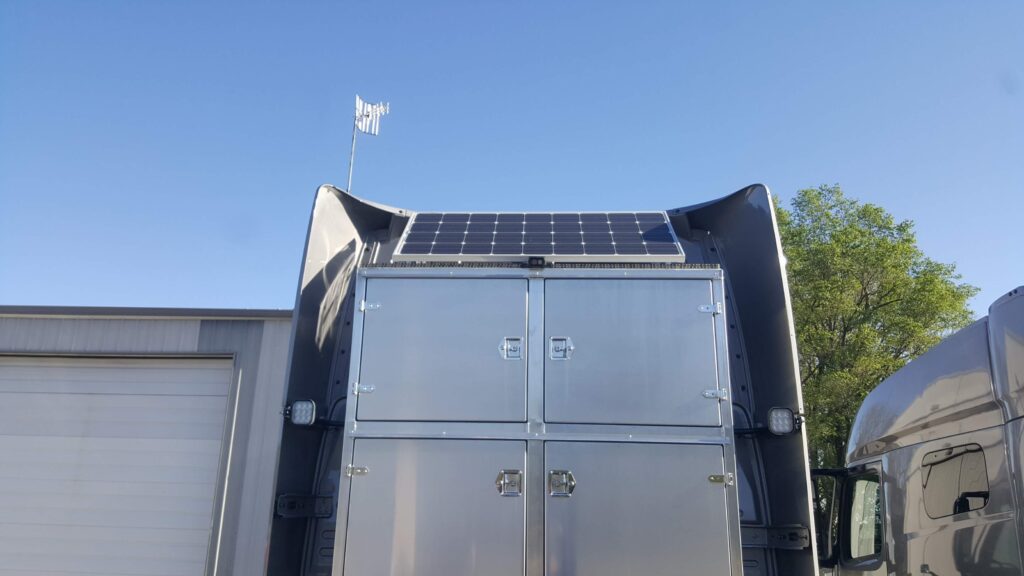

The solar panel above is a military-spec flexible panel on the roof of a 730. This provides battery trickle charging if you have to park away from shore power. While we generally do not recommend flexible panel technology, this MIL-spec panel is robust enough for this use. It is used primarily on mid-roof trucks, where mounting a rigid panel is not optimal.
Solar for your RV roof is covered in the RV electrical section.
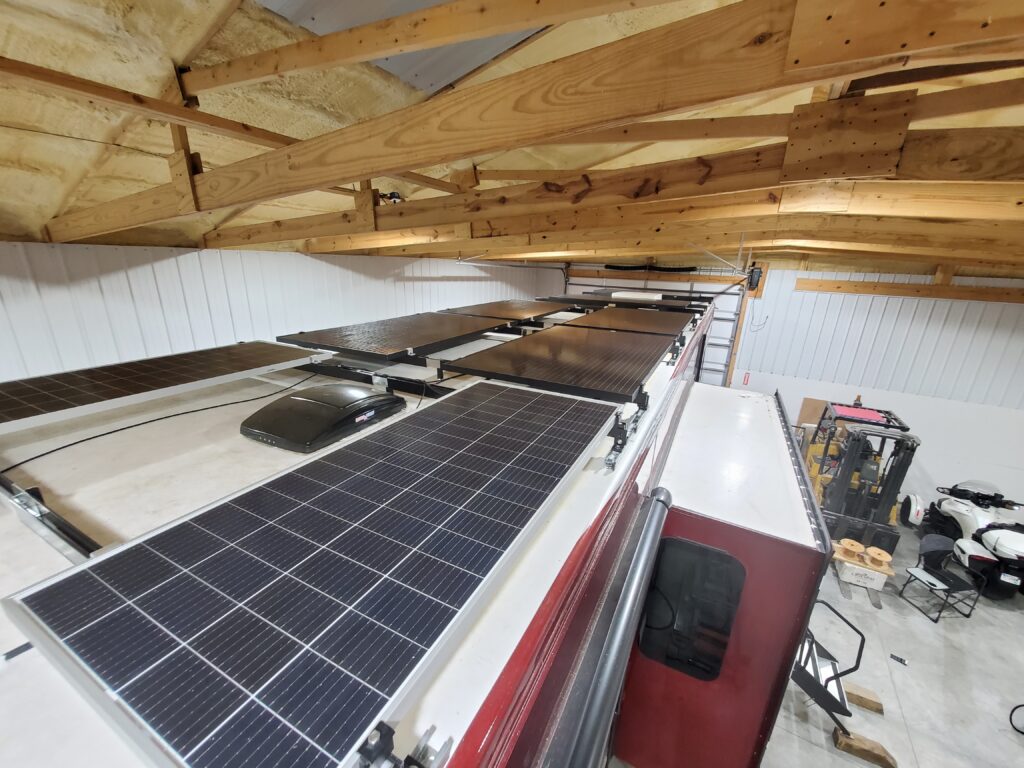
Generators and APU’s
Need APU’s or generators installed? We are dealers for Idle Free battery-driven APU’s for heating and cooling your cab. We can install Onan or other diesel gensets as well.
Idle Free is a battery-based APU and very quiet – unlike diesel engine-driven APUs. In many cases it is much better for recreational use. We use the rail mount system that does not take up space on the back of the cab – which would preclude use of a drom box. The system supplies cab heat, engine pre-heat, air conditioning, battery charging of your chassis batteries, shore power and a pure sine wave inverter. Depending on the environmental conditions, air conditioning can be run eight to twelve hours on the battery bank before the battery bank requires a recharge. The battery bank recharges from the truck alternator, or from shore power.
The air conditioning is not as effective as “residential” air conditioning so you do have to pre-cool the cab, and in hot conditions use your window coverings. But it is an effective solution for many people who would like to use the truck as an office, guest quarters, or simply a nice spot to wait during a “shopping adventure”.
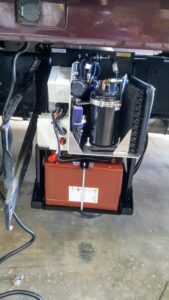
Note that we can upgrade the AGM battery pack in the Idle Free to a Lithium battery bank, along with proper charging modifications. This is custom work we do, but it does not affect the warranty on the Idle Free unit.
Custom Lighting Solutions
Our lighting solutions are state-of-the art. We work directly with the top component providers in the industry to jointly develop innovative solutions. We can provide any type of custom lighting that you need.
Whether it is custom safety lighting that conforms to DOT regulations, or the best accent lighting on the market, we can cover your lighting needs. We consider Boogey Lights to be the industry leader in LED accent lighting for recreational use. We work closely with them to develop accent lighting for your recreational “needs” – for either your truck or trailer.
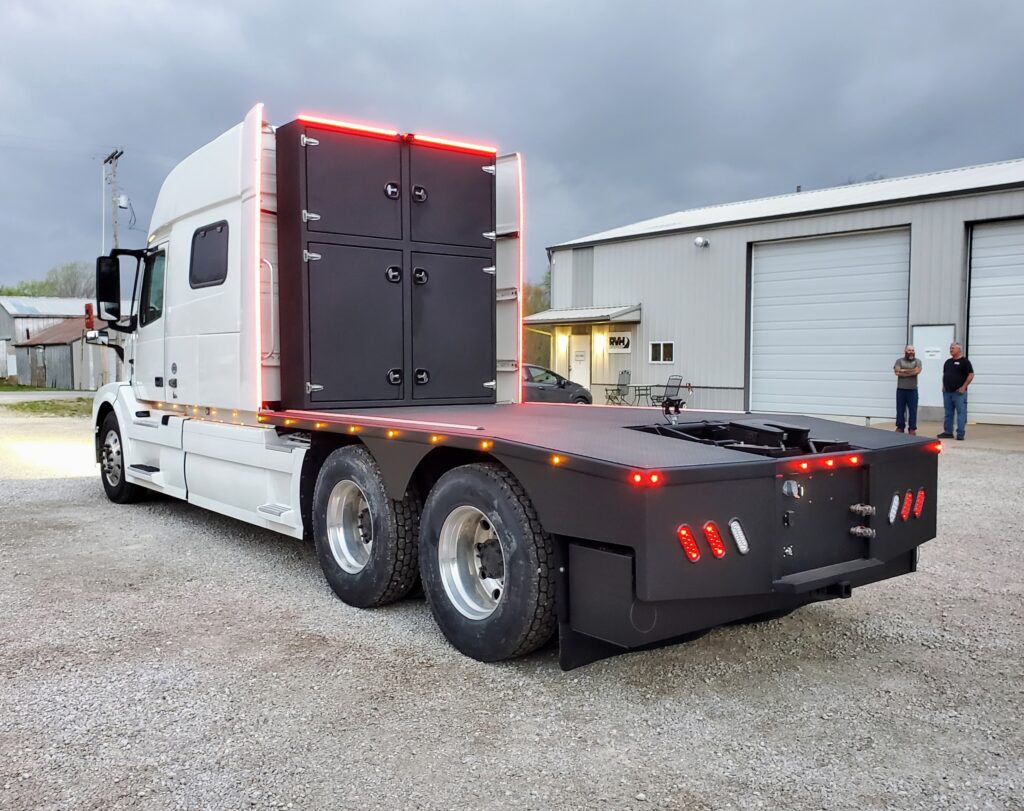
In the picture above, we added chicken lights to the bed, and they continue forward under the cab of the truck, instead of being mounted lower, on the tank fairings. The bed lights are also wired to the turn signals. In addition, this truck has marker/stop/turn signal lights on the top of the drom box, as well as vertically down the cab fairings.
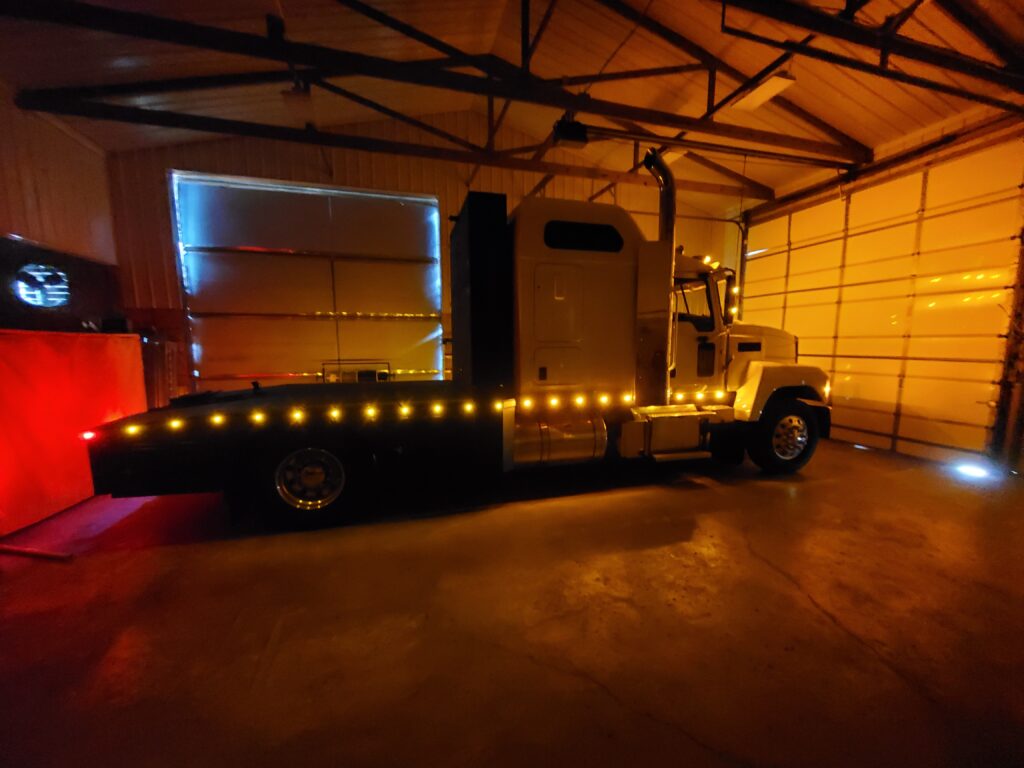
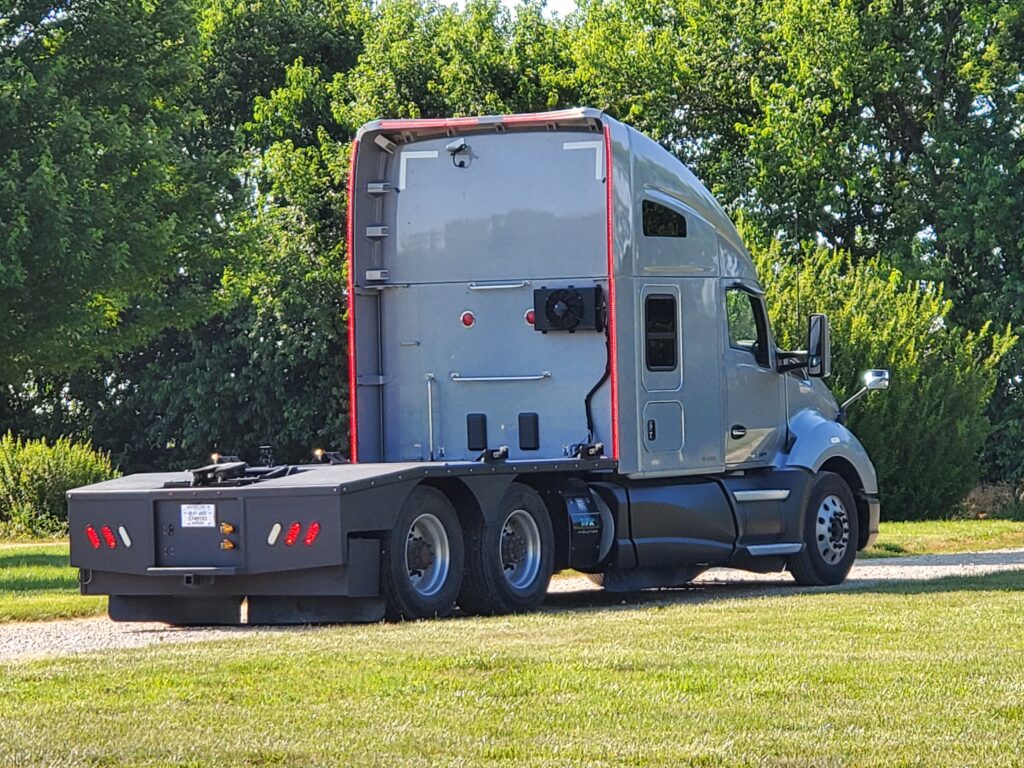
On the Kenworth T680 above we put stop/turn/marker lights on the vertical cab fairings and across the top of the cab. This truck does not have a drom box, so we used the top of the cab for the lighting instead of the drom box. These lights are bright.
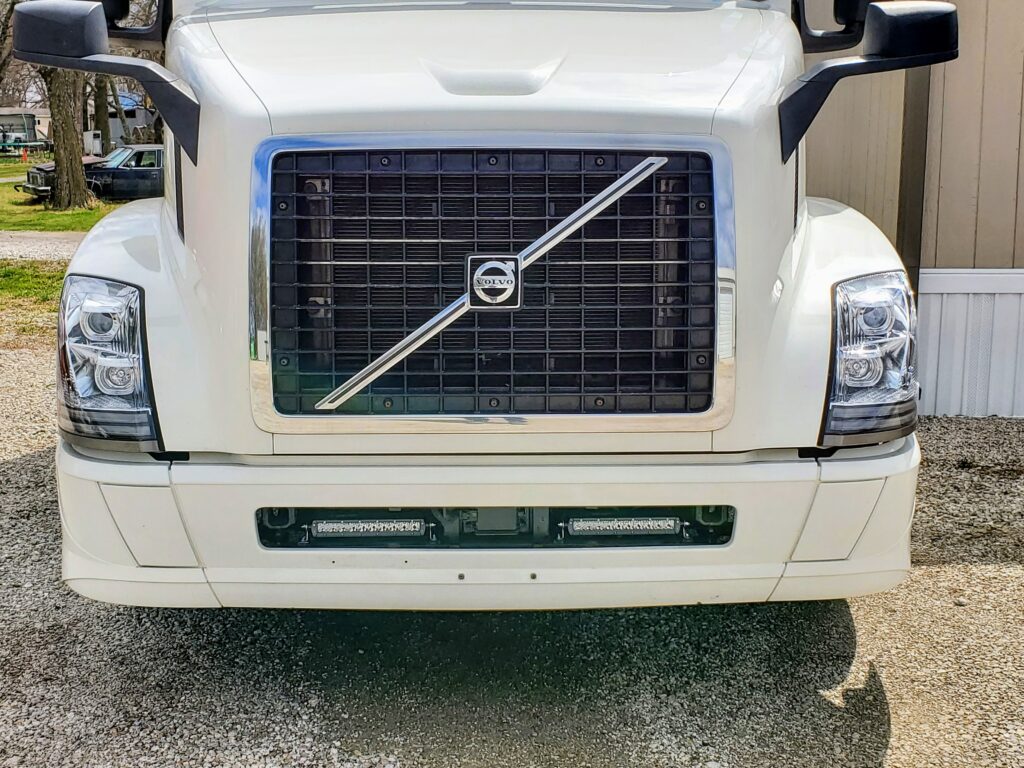
High output driving lights can be installed. The ones above are enabled by a dash accessory switch, and are tied to the high beams with a relay. They are only on when the high beams are on, and the dash switch is also on.
Boogey Lights accent lights can also be installed on the truck and your trailer. We use these lights for a variety of purposes, from pure accent, to functional safety lighting. We are continuously working with Boogey Lights to develop new products, or use existing lighting in innovative ways. We can light your truck in pretty much any way you wish.
